

VETERANS



Earn Your Degree Anytime, Anywhere. Flexible, Affordable, and 100% Online!*
Military life comes with constant changes—deployments, PCS moves, and unpredictable schedules. But your education doesn’t have to wait. At Los Angeles Pacific University, we understand the unique challenges military members, spouses, veterans, and dependents face. That’s why our fully online programs offer the flexibility you need to study at your own pace, no matter where life takes you. Whether you’re on base, deployed overseas, or at home, your degree moves with you!
• 100% Online & Flexible: Learn from anywhere, on a schedule that fits your life.
• Maximize Your Benefits: Use GI Bill®, tuition assistance, and spousal benefits.
• Earn Credit for Your Experience: Take advantage of CLEP, DSST (DANTES), and AARTS/JST to turn your military training and knowledge into college credit.
• Fully Accredited: LAPU offers fully accredited associate, bachelor’s, and master’s degrees through the WASC Senior College and University Commission (WSCUC).
• Faith-Based & Supportive: Dedicated military-friendly success coaches who care about your journey.
Your Future Starts Today! Take the Next Step
*At this time, LAPU is unable to offer distance programs or courses to students residing in the following states and districts: Alabama, Arkansas, Connecticut, the District of Columbia, Indiana, Kansas, Maryland, Minnesota, New Mexico, New York, North Carolina, Oregon, Wisconsin, and Wyoming.




Open the Door to Your Home’s Equity
Dreaming of a new kitchen or need a new roof? Navy Federal home equity loans offer:
•
•
flexibility—Fixed-Rate Equity Loan¹ or Home Equity Line of Credit options² savings—$0 application and origination fees, and $0 closing costs— saving you hundreds opportunities—pay for a large expense or consolidate high-interest debt
• navyfederal.org/equity
Navy Federal is federally insured by NCUA.
Explore your options at navyfederal.org/equity

¹Home Equity Loans are fixed-rate loans. Rates are as low as 7.340% APR and are based on an evaluation of credit history, CLTV (combined loan-to-value) ratio, loan amount, and occupancy, so your rate may differ. A sample Fixed-Rate Equity Loan monthly payment based on $100,000 at 7.650% APR for 20 years is $814.79. Taxes and insurance not included; therefore, the actual payment obligation will be greater. Navy Federal will pay for all closing costs on new Fixed-Rate Equity Loan applications dated on or after 6/1/23. Covered closing costs include lender fees and fees paid to third parties, such as settlement fees, credit reports, flood determinations, property valuations (including appraisals, if required), title searches, lender’s title insurance, recording, mortgage transfer taxes, and government charges. For loan amounts of up to $250,000, closing costs that members may pay typically range between $300 and $2,000. The member is responsible for escrow payments and/or prepaid costs, if required, including property taxes and assessments, homeowners’ and flood insurance premiums, association fees/dues and assessments, and prepaid interest. You must carry homeowners’ insurance on the property that secures this plan. All loans subject to approval. Offer is subject to change or cancellation without notice. 2Home Equity Lines of Credit (HELOC) are variable-rate lines. Rates are as low as 7.750% APR and 8.750% for Interest-Only Home Equity Lines of Credit and are based on an evaluation of credit history, CLTV (combined loan-to-value) ratio, line amount, and occupancy, so your rate may differ. HELOC has a minimum APR of 3.99% and a maximum APR of 18%. Members who choose to proceed with an Interest-Only HELOC may experience significant monthly payment increases when the line of credit enters the repayment phase. Navy Federal will pay for all closing costs on HELOC applications dated on or after 6/3/24. Covered closing costs paid to third parties include settlement fees, credit reports, flood determinations, property valuations (including appraisals, if required), title searches, lender’s title insurance, recording, and government charges. The member is responsible for prepaid interest and escrow payments for first lien HELOCs. Member must carry homeowners’ insurance on the property that secures the HELOC. For loan amounts up to $250,000, closing costs typically range between $300 and $2,000. Applications for a HELOC include a request for a HELOC Platinum Credit Card. All loans subject to approval. Offer is subject to change or cancellation without notice. Rates are subject to change. HELOC loans are not available in Texas. © 2025 Navy Federal NFCU 14215 (7-25)

www.SanDiegoVeteransMagazine.com

Welcome to San Diego Veterans Magazine!
SDVM is a veteran-focused magazine throughout ALL San Diego & Southern California. It serves to assist all veterans, active military as well as their spouses and families.
It is the leading veteran magazine emphasizing resources & support and focusing on topics and issues facing today’s veteran community. SDVM focuses on resources, support, community, transition, mental health, inspiration and more...
The content is the driving force behind our magazine and the connection it makes with our veterans, service members, military families, and civilians.
The magazine is supported by the city of San Diego and a distinguishing list of veteran organizations & members, resource centers, coalitions, veteran advocates, and more. We are honored to share the work of so many committed and thoughtful people.
Despite all the challenges, our team has upheld their focus and let not one opportunity go to provide resources and support to our veterans & military personnel.
On behalf of our team, we wanted to take this moment to say THANK YOU to the readers and our military-veteran community for supporting our magazine. With that support we aim to make a difference and continuing to make a profound impact on the quality of life for our veterans, military personnel and their families.
If you want to catch up on the current and past issues, please visit: www.sandiegoveteransmagazine.com/archives
Mike Miller
Editor-In-Chief
mikemiller@sdvetsmagazine.com www.sandiegoveteransmagazine.com
Publisher Editor-In-Chief
Mike Miller
Monthly Columns
What’s Next In Transition
Eve Nasby
Human Resources
Paul Falcone
Franchise Dreams
Doug Dwyer
Successful Transitioning Stories
Dr. Julie Ducharme
Veterans in Business
Barbara Eldridge
Risky Business
Hadley Wood
Real Talk: Mental Health
Hope Phifer
PTSD: Reclaiming Control
Robert ‘Bob’ Cuyler, PhD
Legal Eagle
Kelly Bagla, Esq.
Veterans Chamber Commerce
Joe Molina
Midway Magic
David Koontz
Veterans Chamber Commerce
Joe Molina
Contributing Writers
Wounded Warrior Project
Disabled American Veterans
(In-House) Correspondents
Holly Shaffner
CJ Machado
Lori Noonan






35th Annual San Diego Military Women’s Luncheon
November 1, 2025



For 34 years, military women from all branches of the Armed Services, and all eras, have been getting together for lunch, a program, and camaraderie. The luncheon is always the kick-off to Veterans Day events in San Diego.
This year’s luncheon is on Saturday, Nov. 1st, with doors opening at 10:30 a.m., and lunch and program beginning at 11:30 a.m. It will be held at Anchors Catering and Conference Center in San Diego.
This year’s keynote speaker is CAPT Michelle M. Pettit, USN, JAGC, and U.S. Magistrate Judge. Judge Pettit is a graduate of the U.S. Naval Academy and Vanderbilt University Law School. Judge Pettit began her career as a Surface Warfare Officer and continues to serve in the Navy Reserves as a Circuit Military Judge. She was appointed to Magistrate Judge on July 24, 2023 and previously served for 16 years as a federal prosecutor with the U.S. Attorney’s Office for the Southern District of California.
Organizers are able to accomodate 200 attendees and the event is open to the public. Tickets are $40 for the plated meal and program; tickets must be purchased in advance.



All Eras, All Branches, All Inclusive


Midway Trains Dog For Naval Service

Dogs on naval warships date back thousands of years. Hieroglyphics show dogs on Egyptian vessels and historical records indicate dogs serving on ancient Roman ships. Even the USS Constitution, one of U.S. Navy’s original ships, was home to a cherished mascot terrier known as Guerriere.
Due to increased regulations, logistical challenges and a more modern naval structure, dogs on Navy ships were phased out after World War II. Recently, however, the Navy has changed course and in 2022 launched the Expeditionary Facility Dog program, a quality-of-life initiative for sea-going sailors.
In 2023, Captain Demo, a golden retriever-labrador mix, joined the crew of the USS Eisenhower (CVN -69) as a morale and emotional support dog to test the new concept. Over the past two years, morale dogs were also placed on three other Atlantic Fleet ships.
This year, the program has migrated to the West Coast A black lab named Raider is currently under training to become the morale dog for sailors on the USS Makin Island (LHD-8). Raider’s training is being conducted by Shelter to Soldiers, a San Diego non-profit organization that adopts dogs from local shelters and trains them to be service dogs for veterans suffering from posttraumatic stress.
The USS Midway Museum is helping the organization with Raider’s training to condition him to life on board a naval ship.
“It takes about six months of dedicated training to prepare the dog for the role of morale dog,” said Nicky More, the director of training and operations for Shelter to Soldiers. “They learn advanced obedience, manners and compression therapy for providing extra physical comfort to sailors. Through our partnership with the Midway, they also learn to traverse the unique ship environment and become acclimated to the sights, sounds and smells of a Navy vessel, including negotiating steep ladderwells.”
Shelter to Soldier actually began making morale visits with dogs to ships stationed in San Diego as a part of its Canine Ambassador Therapy Dog program in 2023. The visits were such a huge hit with the crews that they began asking about taking a dog on deployment with them.
“We knew there were some aircraft carriers on the East Coast that had welcomed dogs aboard,” said Nicky, a graduate of Animal Behavior College’s Professional Dog Training Certification program. “We did a little research and went through the process to get approval with our first ship partner, the USS Makin Island.”

The steep ladders and narrow passageways of a Navy ship can be daunting obstacles that take practice to overcome and instill confidence in a dog. Midway proved to be a perfect platform for Raider’s training.
“We are honored to play a small part in Shelter to Soldiers’ newest mission of preparing morale dogs to be part of the crew on naval warships,” said Dominic Boccia, Midway’s safety director. “Raider and his fellow morale dogs will bring comfort, support and joy to the sailors and Marines they serve.”
Several Makin Island crew members have been chosen to be Raider’s handlers, and his health care will be overseen by the ship medial staff.
“The crew is very excited for Raider to be on board,” said Lt. Cmdr. Emily Deloria, Makin Island’s senior medical officer. “We have been having morale dogs visit every few weeks for the past year, and sailors love to visit and play with the dogs when they are around. I think Raider will improve overall morale, reduce stress burdens, and provide comfort during long stretches of being underway when we miss our families and pets back home."
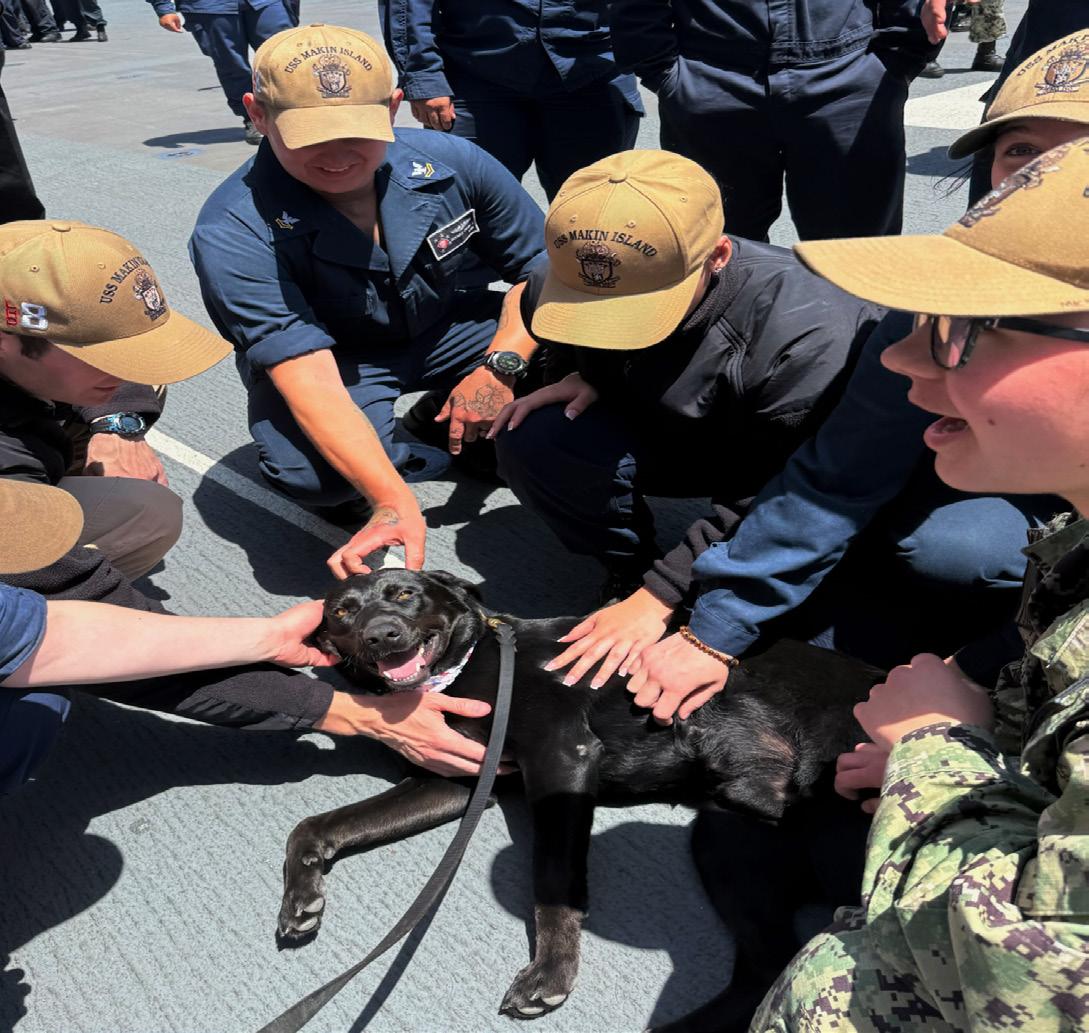
“Think of the morale dog as the ship’s best stress relief — no judgment, no expectations, just tail wags, comfort, and a reminder that someone’s always glad to see you,” said Nicky, who joined Shelter to Soldier in 2017. “The morale dog will serve as a four-legged crew member, boosting resilience, lowering stress, and strengthening connection across the ship."
True to Shelter to Soldiers’ mission, taking in canines that have otherwise been given up on is serving a higher purpose, both for the dogs and those around them.
“We’ve seen that rescue dogs thrive when given a second chance and a new purpose in life,” said Nicky, who also has a bachelor’s degree in business management. “For dogs like Raider, spreading love to and being adored by a thousand shipmates every day is exactly the kind of life they dream of when living in a 15-square-foot kennel run in an overcrowded shelter."
“We are excited,” said Emily, an internal medicine physician. “There is a little bit of pressure since we are one of the first ships, but we have had great training by Shelter to Soldier to care for Raider. We’re honored to have him join our Makin Island family.”
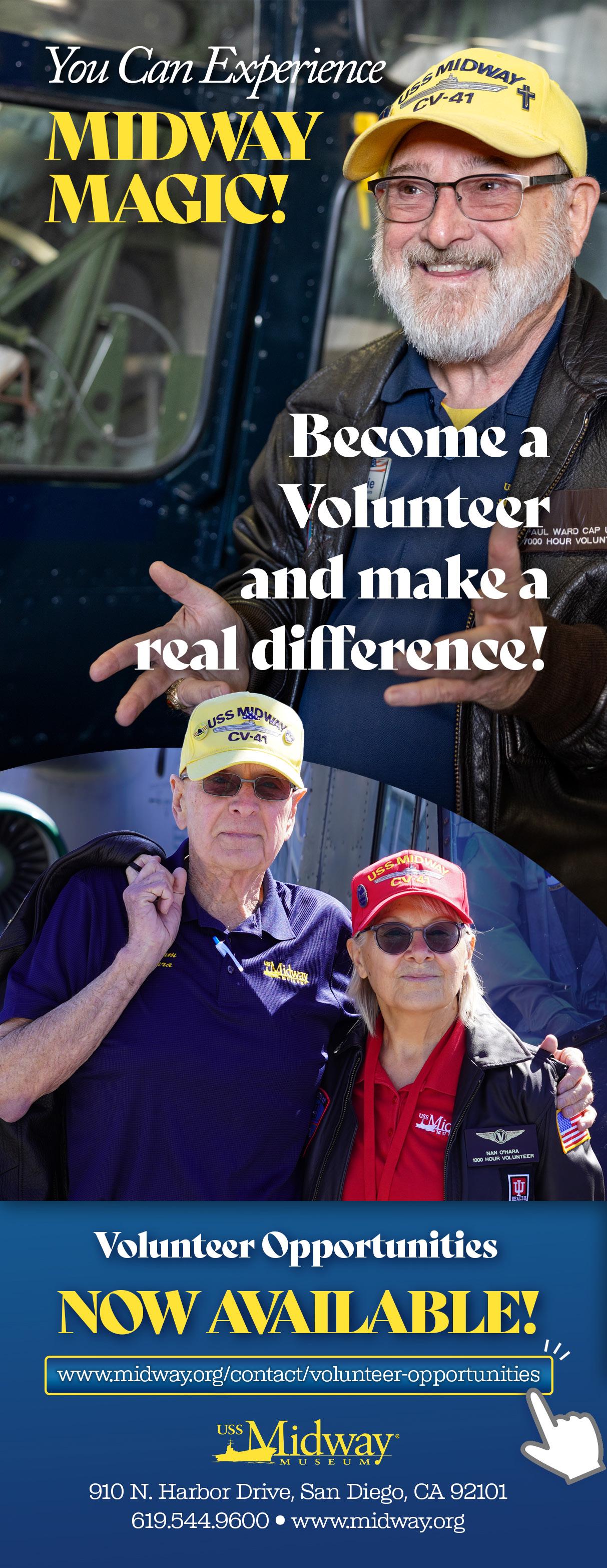
www.midway.org/contact/volunteer-opportunities
www.midway.org
Navy SEAL Museum San Diego Open to the Public Saturday, Oct. 4, 2025
San Diego Veterans Magazine sat down with Executive Director Brian Drechsler (Captain, U.S. Navy, Retired) to learn more about the museum’s mission and its engaging exhibits.

The world-class experience of the Navy SEAL Museum has arrived in San Diego, offering unparalleled access and insight into the world of U.S. Navy SEALs and their predecessors, inspiring generations to come. Positioned near San Diego’s waterfront, their collection of interactive exhibits and state-of-the-art galleries bring the story of Naval Special Warfare to life.
Building on the legacy of the existing location in Fort Pierce, Florida, the Navy SEAL Museum selected San Diego for its expansion west, as the city serves as the epicenter of Naval Special Warfare, where all SEALs and Special Warfare Combat Crewmen (SWCC), and many critical support personnel, are forged. The opening of the Navy SEAL Museum’s showcase location downtown will serve as a launchpad for a larger San Diego venue in the future, for which the search is actively underway.
SDVM: Please tell us about yourself and the inspiration behind the museum.
Drechsler: Originally from Pittsburgh, I attended the U.S. Naval Academy and subsequently graduated from Basic Underwater Demolition/SEAL (BUD/S) Class 224. From there, I had the honor of serving 25 years as a SEAL Officer in Naval Special Warfare. I retired from active duty as Captain in June 2024 and three weeks later signed on to a new mission – to join the Navy SEAL Museum San Diego. Serving the Naval Special Warfare community through the museum is an absolute privilege.
Building this museum in San Diego as a westward expansion from our original Fort Pierce, Florida location was a natural fit, as the region is central to SEAL training and home to Naval Special Warfare Command. Through historical accounts and immersive experiences, we aim to honor the past and impact the future, impressing the core values of SEAL ethos upon all who visit. Serving as a space for learning, reflection and connection, the Navy SEAL Museum San Diego honors those who have committed to extraordinary service for their country while inspiring all visitors to serve a cause greater than themselves.
SDVM: Will you please share a few exhibits in the museum you think are most impactful?
Drechsler: "In the SEAL Mindset Theater", visitors will come face-to-face with the discipline and perseverance it takes to succeed as a Navy SEAL through a powerful documentary experience. The theater not only educates, but inspires visitors to embrace core Navy SEAL principles in their own lives to handle life’s challenges and achieve success.
Visitors can also navigate eight featured missions through a self-guided touch screen and dive deeper into the details and key moments of specific Naval Special Warfare missions – from Normandy to Neptune Spear. Combined with personal narratives and interactive displays, these exhibits give visitors a deeper appreciation of the discipline, teamwork and adaptability that define the SEAL Ethos.


All Photos Provided By: Navy SEAL Museum San Diego
SDVM: How will docents play an important role in the visitor experience?
Drechsler: Our docents are one of the most important aspects of the museum experience. Many of our docents are retired or veteran SEALs and SWCCs, bringing firsthand knowledge and personal insight to every tour.
Through their stories, guests gain a more intimate understanding of the resilience, sacrifice and values that define Naval Special Warfare. Visitors aren’t just walking through a museum — they’re walking alongside those who lived the legacy. That kind of connection turns a visit into a meaningful and often unforgettable experience.
SDVM: What kind of impact do you hope the museum will have on visitors and the community?
Drechsler: Our hope is that visitors leave not just informed but inspired. We want to educate visitors about how Naval Special Warfare’s special operators undergo unparalleled training, how they are forced to
adapt and persevere to accomplish their missions – and through these stories, we want to inspire every guest, from any walk of life, to feel inspired to serve with purpose and serve a cause greater than oneself.
When service members and their families visit the museum, they are not only welcomed, they are seen, honored and deeply appreciated. In seeing their stories and their sacrifices recognized, we hope they share a profound sense of pride and belonging here.
We also value the museum as a place of remembrance, where the past is honored, the fallen are never forgotten and their stories continue to inspire. In remembering the fallen and their families, we carry forward their mission, their values and their unwavering commitment to service.
The museum is a starting point – we’re committed to impacting lives beyond the museum.
Navy SEAL Museum San Diego opens October 4. Visit NavySEALMuseumSD.org to plan your mission and secure your tickets.

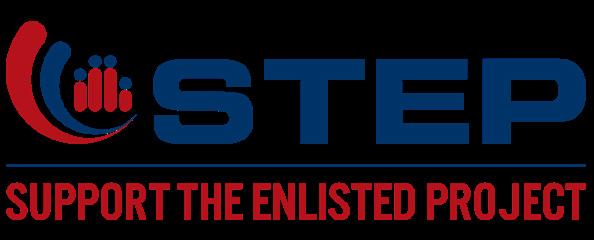
Financial Wellness For








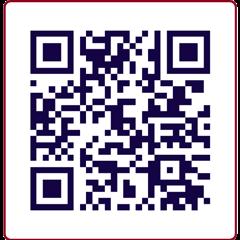






MILITARY FAMILY RESOURCE CENTER
S e r v i n g t h e S a n D i e g o M i l i t a r y C o m m u n i t y s i n c e 1 9 9
S O M E O F O U R O N - S
Playgroup
For parents & caregivers with children age 0-5 years old In person, Wednesdays, 10am11am. Rain or shine!
No registration required
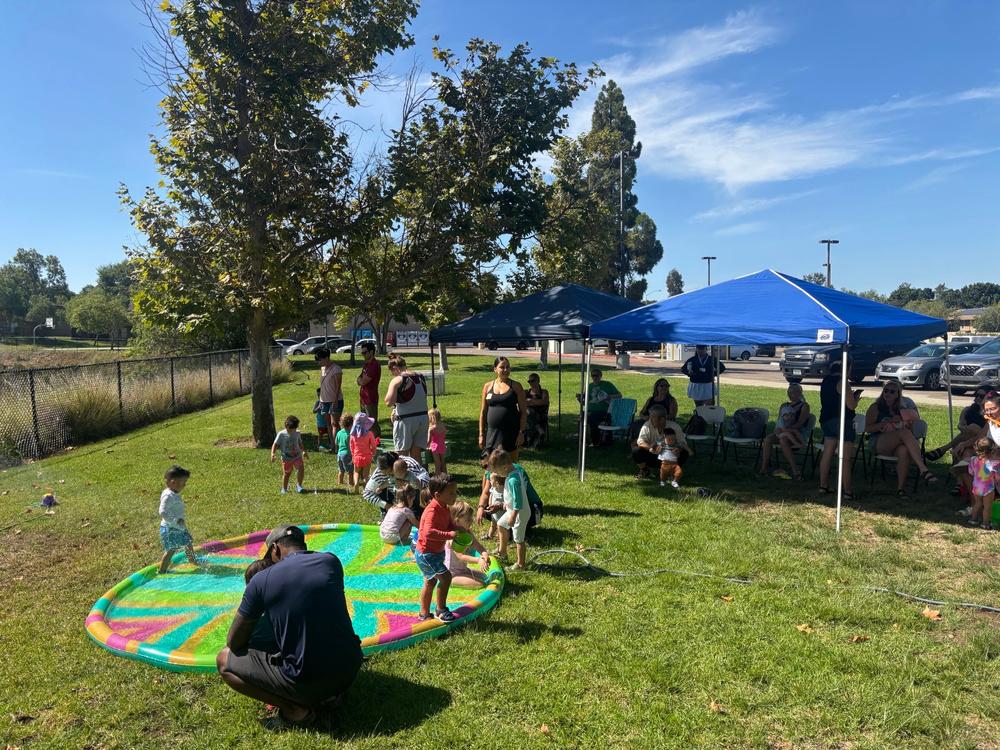
Community Garden
Bring the kids or come alone! Thursdays, 10am-11am
No registration required

Resource & Referral Support San Diego Military Family Collaborative
We offer personalized resource support designed to meet your unique needs In person, over the phone or via email!

The SDMFC hosts monthly meetings to discuss challenges that military families face


S i n c e i t s f o u n d i n g , t h e M F R C h a s g r o w n i n t o m o r e t h a n j u s t a r e s o u r c e c e n t e r
A s
i v i l i a n
b e h i n d a r o w o f b u s i n e s s e s i n M u r p h y C a n y o n , o u r i m p a c t r e a c h e s f a r b e y o n d i t s w a l l s
W h e t h e r y o u ' r e a f a m i l y n e w t o S a n D i e g o o r a l o n g t i m e r e s i d e n t j u s t d i s c o v e r i n g u s , o u r d o o r s a r e o p e n , a n d w e ' r e h e r e t o h e l p
For more information and to access our services:

Want to make a positive impact in the lives of local military families? Donate here:
Real Talk: Mental Health
Giselle Vallejo, LPCC, NCC
The Steven A. Cohen Military Family Clinics at VVSD www.cohenveteransnetwork.org


A Call to Action: What Every Service Member and Veteran Should Know This Depression Awareness Month
The word depression can sometimes feel heavy or even scary. The truth is, depression can affect almost anyone and the military community experiences it in unique ways. It can impact service members, veterans, and even ripple out to family members.
This Depression Awareness Month, we want to share helpful information about what depression looks like, how it can show up in military and veteran families, and where you can find support.
Understanding Depression
Depression is more than feeling sad or discouraged after a tough day. It’s a medical condition that can affect how you think, feel, and function.
Common symptoms include:
• Persistent sadness, hopelessness, or emptiness.
• Irritability, frustration, or anger.
• Loss of interest in activities once enjoyed.
• Changes in sleep or appetite.
• Fatigue or low energy.
• Difficulty concentrating or making decisions.
• Thoughts of death or suicide.
In the military community, depression may also show up as:
• Drinking more alcohol or using other substances.
• Pulling away from your unit, friends, or family.
• Struggling at work or during reintegration after deployment.
• Feeling unsure about your purpose or identity after leaving service.
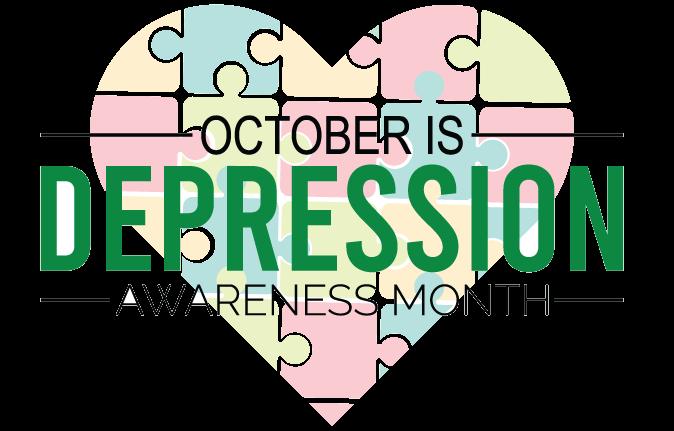
How Depression Impacts Families
Depression doesn’t only affect the individual, it impactsspouses, partners, children, and caregivers.
• Spouses/Partners: May feel the strain of extra responsibilities, isolation, or worry about their loved one’s safety.
• Children: Might notice changes in mood or behavior and sometimes blame themselves for a parent’s sadness.
• Caregivers: Often experience stress, burnout, or even depression themselves while supporting someone else.
How to manage Depression:
Family support is critical in recovery. When depression is recognized early and families are included in treatment, outcomes improve significantly.
With the support of professional help, depression can be managed effectively. Evidence-based therapies like Cognitive Behavioral Therapy (CBT), medication, or a combination of both are highly effective. Peer support, lifestyle changes, and family involvement further strengthen recovery.
At The Steven A. Cohen Military Family Clinics at VVSD, which is part of Cohen Veterans Network (CVN), we provide care that is accessible, inclusive, comprehensive, and affordable.
We offer in-person or telehealth options, we serve post-9/11 veterans, current service members (including Guard and Reserves), and their families, we provide Individual, couples, family, and child therapy, and insurance is accepted, but no one is turned away due to inability to pay.
What You Can Do This Month
1. Get a Mental Health Checkup
Just as you get an annual physical, schedule a mental health check-in. Even if you’re not in crisis, knowing your baseline helps.
2. Learn the Signs
Recognize symptoms of depression in yourself and loved ones. If you notice changes, don’t wait, reach out.
3. Encourage Family Conversations
Normalize talking about feelings at home. Children and spouses benefit when open conversations about stress and emotions are part of family life.
4. Reach Out for Support
Contact the Cohen Clinics at VVSD or another clinic within Cohen Veterans Network to explore services, ask questions, or schedule an appointment.
You can also utilize free online tools like CVN’s Tools for Stress & Worry:
cohenveteransnetwork.org/tools-for-stress-and-worry
Depression can affect anyone, but no one has to face it alone. By understanding how it impacts veterans, service members, and their families, we can break the silence and open the door to healing. Strength is seeking help. This Depression Awareness Month, take one step toward caring for yourself, your family, or a fellow veteran.

PTSD: Reclaiming Control
By: Robert ‘Bob’ Cuyler, PhD Psychologist and Trauma Expert

PTSD in the Media: Substance and Hype

Maybe I should be reading more journals andprofessional books in my evenings, but I have to confess it's streaming series, movies, and suspense novels I turn to for my nightly entertainment. A while ago it began to register how often trauma and PTSD are used as key plot devices. This seems to have replaced the ‘one last job’ for the assassin or robber as the go-to theme. Just the other night, I started to watch “The Pitt” and in the first episode we have Dr. Robby having a near hallucinatory flashback of the emergency room in full COVID spacesuits, clearly connected to the death of his mentor. It’s interesting that in the midst of this compelling medical drama, we have a trauma theme playing a key role in the life and identity of the series hero.

I have complicated reactions to this trend in mass media entertainment. On the one hand, PTSD is seen as a civilian as well as a military condition. The story line in “The Pitt” portrays an important fact that even accomplished, smart people like Dr. Robby are not immune from PTSD. It’s important to recognize that trauma can take many forms, and the recognition of trauma in medical settings seemed to be a new understanding during the pandemic, affecting patients as well as caregivers.
The recognition extends to how trauma can change a life, and that unexpected event can have huge impact. This expanded recognition can help some feel less isolated, that their experience is shared by many others, and hopefully that individuals will turn that greater awareness into steps, including therapy, to challenge the symptoms that are distorting their lives.
On the other hand, the focus on trauma in media, social media, series, movies and novels creates a risk that the boundaries of trauma impact are being stretched. The vigorous debates about ADHD and autism spectrum more and more center around the risk of “medicalizing” the human condition, blurring the distinction between formal diagnoses with a strong evidence base and the range of normal human behavior. As I’ve pointed out in previous columns, only about 20% of people develop PTSD after experiencing significant trauma, clearly pointing to the capacity for resilience.
Another aspect of portrayal of PTSD is that the presence of the key symptoms of the condition come to define the individual’s identity, almost as though a ‘person with PTSD’ morphs into ‘PTSD with a person attached.’ The complaint of ‘being triggered’ is also ubiquitous, and it’s often unclear whether triggered means being bothered or offended by the words or behaviors of others or our more narrow use of the term in clinical work.
What we know best about recovery is that it’s a process, with hard and challenging work ahead. Challenging avoided situations, developing and strengthening selfmanagement skills, reducing isolation by growing your connection to others, remaining solidly aware that ‘you are not your symptoms’ - these are some of the key ingredients in the path to growth and relief.

Dr. Cuyler is chief clinical officer of Freespira, an FDA-cleared non-medication treatment that helps people with panic and PTSD manage their symptoms by learning how to regulate their breathing. www.freespira.com


— Barry C., 58 year old Veteran




It’s Never Too Late to Access the VA Benefits You’ve Earned
By Lori Noonan, US Navy Veteran, CEO of Capacity Builders and In-House Contributor of Homeland Magazine and San Diego Magazine

I still remember the day I opened the mailbox and saw the envelope from the Department of Veterans Affairs. Like most veterans, I’d gotten used to the steady stream of paperwork—forms, notices, information I didn’t quite know how to navigate. But this envelope was different. Inside was a check, larger than anything I ever expected, representing decades of benefits I had earned but had never thought I’d see.
For years—decades, really—I assumed that the process to apply for VA benefits was too complicated, too timeconsuming, or that my service simply didn’t “qualify” for meaningful support. I convinced myself I’d missed the window, that benefits were for those who filed immediately after discharge. Like many of my fellow veterans, I focused on building a civilian life and didn’t think I had the time or patience to engage with what I believed was a daunting bureaucracy.
Looking back, I realize how common that hesitation is. So many veterans believe the system won’t work for them, that the effort won’t be worth it, or that it’s simply too late. But that check in the mail proved me wrong in the most life-changing way.
Overcoming Doubt
I wasn’t confident when I finally decided to file a claim. In fact, I was skeptical. A friend had encouraged me to give it a shot, reminding me that the benefits I was pursuing weren’t a “handout”—they were earned. Our service, our sacrifices, entitle us to support, whether it’s health care, compensation for service-connected conditions, or other forms of assistance.
The process wasn’t easy, but it was manageable, especially once I had help. I gathered medical records, service documents, and filled out what felt like endless forms. There were moments when I doubted it was worth it. I told myself, “They’ll probably deny it anyway.” But here’s the truth: persistence pays off. The system exists for veterans, and while it can feel intimidating, it works—especially if you have the right guidance.
The Day Everything Changed
That check in the mailbox wasn’t just money. It was validation. It was the government recognizing my service and acknowledging the toll it had taken on me. It meant I could breathe a little easier, cover expenses I’d been worrying about, and know that I hadn’t been forgotten.
It also made me realize how many veterans might be living without the benefits they’ve earned, simply because they assume it’s too late. If that’s you, let me be the one to tell you: it is never too late.
Why Support Matters
I didn’t walk this journey alone. Organizations like Veterans Voice of America (VVOA) exist to help veterans like me—and like you—navigate the benefits process. VVOA and similar groups provide education, advocacy, and one-on-one support. They know the system, they know the paperwork, and they know the barriers that stop so many of us from even applying.
Having an advocate makes all the difference. Instead of feeling like you’re up against a wall of red tape, you have someone on your side who understands the process and can help make sure you don’t miss out on what you’ve earned.
Key Lessons for Veterans
If I could sit down with every veteran who’s hesitating to apply for benefits, here’s what I’d say:
1. It’s never too late. Whether you separated last year or 40 years ago, you may still be eligible. Don’t count yourself out.
2. Benefits are earned, not given. These programs exist because of your service. You don’t need to “deserve” them beyond what you already gave when you served.
3. Get help. Organizations like Veterans Voice of America are here to walk you through the process. You don’t have to figure it out alone.
4. Persistence pays off. The system can feel overwhelming, but with determination and the right support, you can succeed.
A Call to Action
For me, accessing my VA benefits decades after service was transformative. The financial relief was critical, but the sense of recognition mattered even more. It reminded me that my service still counts, that I am not invisible, and that the promises made to me as a veteran still stand.
If you’ve been putting it off—if you’ve told yourself it’s not worth it or that the time has passed—please take this to heart. File the claim. Reach out for help. Advocate for yourself, and let organizations like Veterans Voice of America advocate for you.
One day, you might open your mailbox and feel the same incredible relief I did. And you’ll realize that it truly is never too late.To learn more about Veterans Voice of America, visit VeteransVoice.org.






Getting Help for the Veteran in Your Life who is Abusing Drugs or Alcohol
By Jay Wylie
At Confidential Recovery (CR), our outpatient drug rehab program is open to any adult with a sincere desire to get sober. However, it is attended by many U.S. veterans and active duty servicemembers who have found it a place where they can get the support they need to overcome their problems with substance abuse.
When we celebrated our 10-year Anniversary last October, there was a huge contingent of military veterans in attendance to witness our facility get several proclamations from the County of San Diego, our Congressional Representatives, and other local leaders. Soon after, we were approved to treat activeduty military as well.
As a 22-year Naval Veteran, and Operations Manager for CR, I take great pride in our reputation for building strong connections with veterans who are struggling with both substance use and PTSD.
The Military’s “Warrior Ethos” is At-Odds With Getting Help
Prior to my own treatment and beginning a fulfilling life in recovery, I was a dedicated sailor, and “The Warrior Ethos” was deeply ingrained, starting from the very beginning of my military training. This philosophy taught me that I should be self-sufficient, never ask for help, and never let the team down or fail at the mission.
Unfortunately, when it comes to a substance use disorder, which is universally recognized as a mental health disorder, refusing to acknowledge or get help for the problem causes it to get worse over time. The Warrior Ethos is a difficult barrier to overcome for a veteran who has developed a problematic pattern of drinking or drug use and should be ideally saying, “I am willing to accept help to overcome this problem.” Sometimes the three hardest words in the English language are “I need help”.
That help is available in many places, including at our outpatient drug rehabilitation program in central San Diego (in the Kearny Mesa area).
What Does Outpatient Drug Rehabilitation Really Entail?
Outpatient drug and alcohol rehabilitation is a manageable commitment that fits in with most people's schedule. It's 3 days per week, and 3 hours per session,
for a total of 9 hours per week. Confidential Recovery utilizes a "social model," which features group therapy, but includes individual counseling as well. Confidential Recovery offers day and night meetings, including weekends, and some sessions can be attended remotely (via Telehealth).

Who to Call If Your Loved One is in Need of Help
If you are in the Southern California area, you should contact Confidential Recovery directly at (619) 752-7590 for a private and complimentary assessment of your situation. If you are calling about a loved one, we can provide guidance on how to address the issue with them. I am the operations manager, and our staff has many veterans who may be able to help.
Our founder and CEO, Scott H. Silverman, is known as the premiere Family Crisis Coach in the country, and has guided many San Diegans’ family members into accepting treatment at our center. Scott has been helping people in San Diego for nearly 40 years, so much so that the City of San Diego created a Scott H. Silverman day (February 19th) in 2008. If you or your loved one are ready to enroll in treatment, it may expedite the process to have your TriWest, TRICARE, or other insurance details ready.
For more information you can visit the Confidential Recovery website at: www.confidentialrecovery.com
About the Author

Jay Wylie is a Southern California native who served as a Naval Officer for 22 years. Jay is in recovery now get sober and stay that way at Confidential Recovery in San Diego, California.

ADDICTION TREATMENT
Veterans in San Diego




- Patriots to Education: Pathways for Veterans
- Finding Purpose After Service
- Transitioning into Management in the Private Sector
- Experiences from Combat to Corporate
- Dress for Success: Empowering Warriors
- Runway to a NEW Career
- Business Opportunities with Low Investment
- E-Commerce Laws Affecting Online Businesses
- Time to Re-Evaluate Your Financial Strategy
- Careers in Law Enforcement


For editorial & monthly columns regarding transition, career advice, tips, workshops, transition to education, entrepreneurship, straight-forward legal tips for military and veteran business owners and more, visit Veterans In Transition.
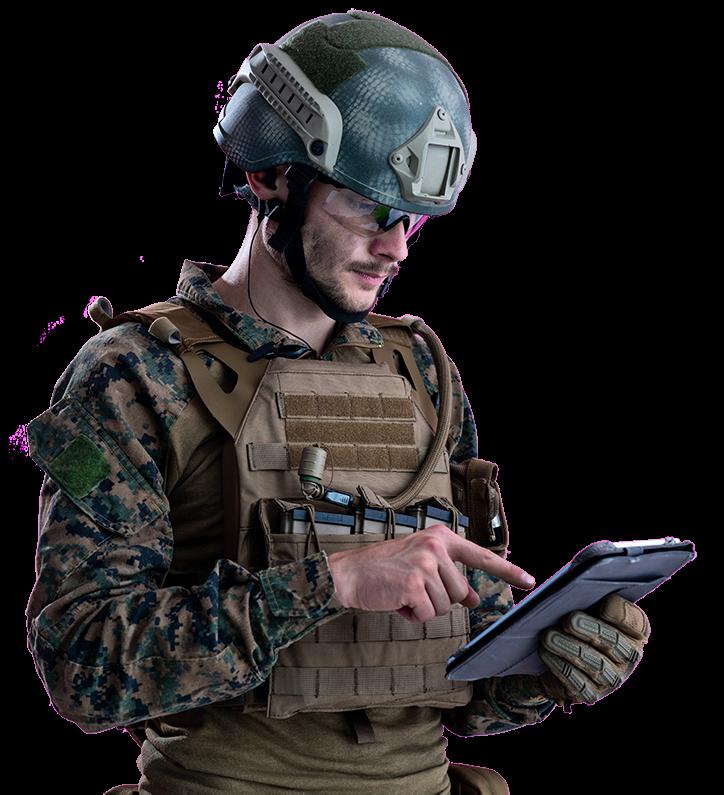





Patriots to Education continues its mission to connect Veterans, National Guard members, Reservists, and military spouses with meaningful second-career opportunities in public education. Across the states where we are active—California, Florida, Texas, Nevada, and now Nebraska—our work is focused on raising awareness of these opportunities and providing handson support as service members and their families transition into second careers in public education.
Patriots to Education: Building Pathways for Veterans For more information visit: patriotstoeducation.org

Finding a job in the civilian workplace may seem easy at first. After all, you have learned skills, practiced leadership and demonstrated initiative that will make you successful wherever you go.
The reality, though, is that it can be difficult. In fact, it can be downright depressing demotivating and you may feel totally disillusioned. We can help
In our Veterans In Transition archives you will find helpful and informative articles about what’s next in transition, veterans in business, career, advice, tips, workshops, transition to education, entrepreneurship, veteran franchises, legal tips & resources for veteran businesses and much more...
For assistance in your journey please visit: SDVMagazine-Veterans-In-Transition sandiegoveteransmagazine.com/category/whats-next-transition


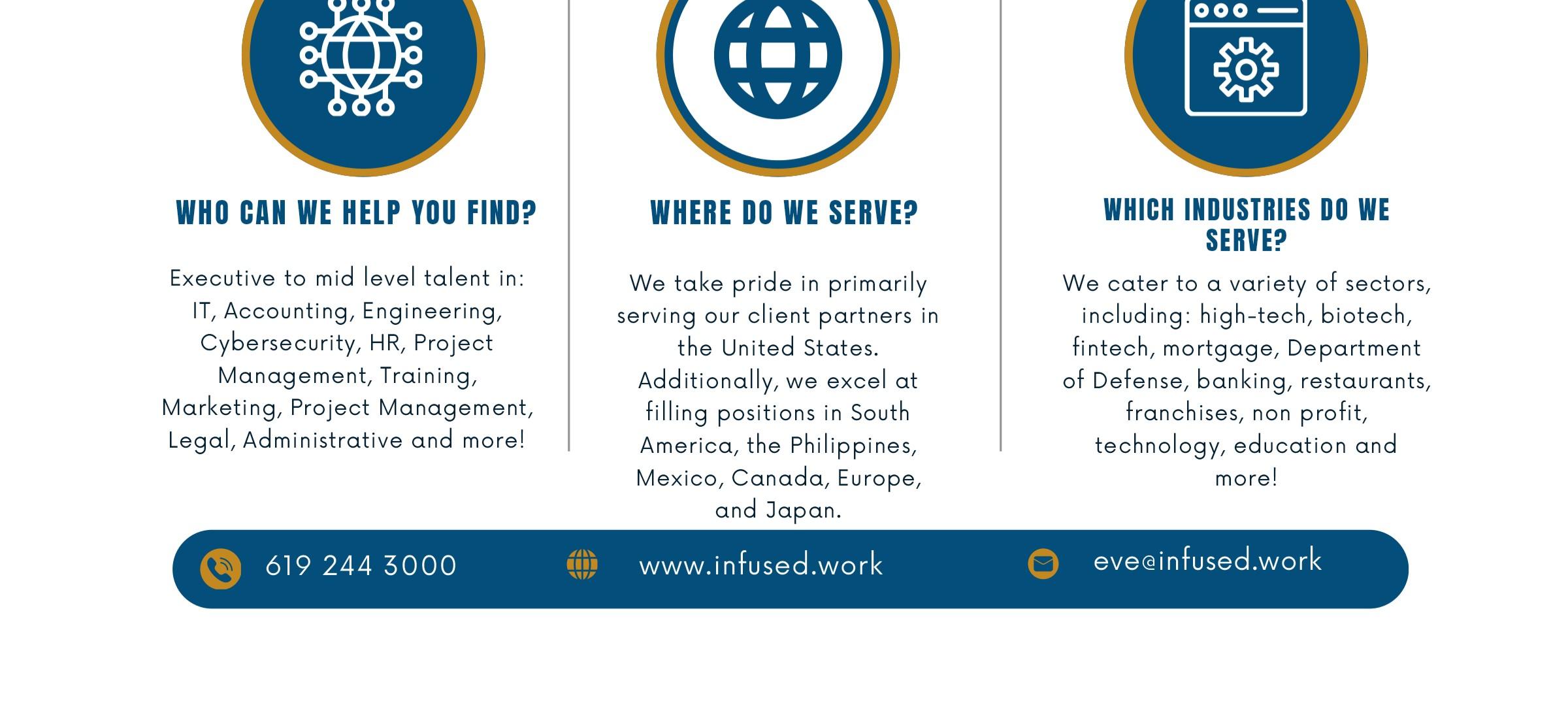




Finding Purpose After Service: San Diego's STARR Community Reintegration Orientation
By Maurice D. Wilson, MCPO USN (Ret), President/Executive Director, NVTSI.org
When every young man and woman raises their right hand and takes the oath to serve, they are immediately sent through a deliberate, structured process—boot camp. The goal of boot camp is clear: transform civilians into soldiers, sailors, airmen, Marines, Guardians, and Coast Guardsmen capable of operating in the most demanding environments in the world Yet, when the uniform comes off and the service ends, there is no equivalent “reverse boot camp.” Veterans exit military life carrying the same discipline and resilience but often without the roadmap to translate those qualities into their next mission. Without a structured reintegration process, many uncertainties, disconnection, and what we call purpose anxiety.

4. HABE – The Maintainer
5. Self-Talk and Affirmations – The Programmer
6. Replacement Picture – Your New Identity
7. Live with Purpose on Purpose – The Next Mission
8. Human Agency – Your Built-In ChatGPT
9. Career DNA – Your Unique Blend of Skills, Values, and Experiences
Each of these helps veterans reclaim their identity, align with purpose, and thrive in civilian careers and communities.
Three Stories of Transformation
Story 1: From Rank to Relevance
James, a retiring Navy Chief, spent over two decades leading sailors and managing complex operations. Yet as he prepared to transition, he struggled with identity: “Who am I without the anchors on my collar?”
This is where the STARR-REBOOT: Shore-Based Transition Assistance and Reintegration Readiness steps in. Conducted by National Veterans Transition Services, Inc. (NVTSI.org) in partnership with the San Diego Veterans Coalition and local military installations, STARR equips veterans, transitioning service members, and their families with the tools to thrive in civilian life. Much like boot camp builds a warrior, STARR builds a reintegrated veteran—ready for purpose-driven careers, families, and communities.
Why Reintegration Matters
San Diego is home to more than 240,000 veterans and thousands of active-duty service members preparing to transition each year. While the military prepares us for war, few are adequately prepared for peace. National data shows that nearly 66% of transitioning service members leave the military without a civilian job, and more than half experience underemployment or identity struggles within the first year. The STARR Orientation addresses this head-on. It is a deliberate, evidencebased process that empowers participants to realign identity, mission, and purpose. It’s not about “what job can I get?”—it’s about who am I now, what do I bring, and what mission am I meant to pursue?
Key Concepts of the STARR Orientation
At the heart of STARR are nine powerful concepts that act as pillars of transformation.
1. Self-Awareness – The Military Construct
2. Systems Thinking – It’s All Connected
3. Mindset – Must Change
Through STARR, James confronted his military construct He realized that while his rank defined his role in the Navy, his leadership, problem-solving, and mentoring abilities defined who he truly was. By crafting a replacement picture, he began to see himself as a mentor and trainer in the civilian workforce. Today, James works in workforce development, coaching young adults to build careers. His mission is clear: “I don’t just train workers. I train future leaders.”
Story 2: Rewriting the Inner Script
Maria, a Marine Corps veteran, entered the workshop overwhelmed by negative self-talk. After years of high-stakes deployments, she returned home feeling unworthy and uncertain. Her HABE—habits, attitudes, beliefs, expectations—kept her stuck in a cycle of doubt. STARR introduced Maria to affirmations and self-talk as tools of reprogramming. She learned to replace “I’m not qualified” with “I bring unique value.” She created a vision of herself as a project manager in the clean energy sector—an industry she was passionate about. Six months later, Maria is leading renewable energy initiatives in San Diego. Her words today?
“I stopped doubting myself and started living with purpose, on purpose.”
Story 3: Finding a New Mission in Community
David, an Army veteran, had a difficult time adapting to civilian life. He missed the camaraderie of his unit and felt isolated in his new community. In STARR, David discovered systems thinking—the idea that his life was interconnected and that he wasn’t meant to navigate it alone. He embraced his human agency and chose to
reinvest his leadership skills into community service. With his new career DNA in hand, David transitioned into nonprofit management, building programs for atrisk youth. He often shares with peers: “I didn’t lose my mission—I just reassigned it. Now, my battlefield is my community, and my weapon is mentorship.”
Community Reintegration in Action
What makes STARR unique is its community-centered model. Delivered in partnership with the San Diego Veterans Coalition and supported by local military installations, the workshop ensures veterans are not left to figure transition out alone. Participants connect directly to community resources, employers, colleges, and peers who walk with them long after the workshop ends.
The result? Veterans who don’t just survive transition but thrive. They find careers that match their strengths, communities that welcome their leadership, and missions that give their post-service lives deep meaning.
The Call to Action
Every veteran went through boot camp to prepare for service. Every veteran deserves a reintegration “boot camp” to prepare for civilian life. The STARR Community Reintegration Workshop is that process. San Diego is leading the way, but this model can—and must—be scaled nationwide. If you are a transitioning service member, veteran, or military spouse, don’t go it alone. Sign up for a STARR Orientation at NVTSI.org
For employers, community leaders, and fellow veterans: join us in ensuring no one takes off the uniform without a roadmap to their next mission. Reintegration is not just about finding a job—it’s about reclaiming identity, purpose, and agency.
Because once a veteran finds their next mission, they don’t just change their life—they change the world around them.

HUMAN RESOURCES Transition to Business
By Paul Falcone PaulFalconeHR.com


Transitioning into Management in the Private Sector
Needless to say, the military and civilian sectors are different. Sometimes, those differences can feel worlds apart. And even if you’re technically skilled in a particular area or discipline, it doesn’t mean that performing the role for a private company will feel natural or lead to a smooth transition. Your best bet? Come to the table prepared to learn and adapt to new civilian norms. It’s not as hard as it sounds if you’re being your authentic self and looking to bring out the best in those who work for and with you.
Management and Leadership in the Private Sector Management and leadership are not the same thing. Management is about the position you hold, where you stand on the corporate totem pole, and how you “rank” relative to others in the organization. It assigns certain advantages but also obligations. Leadership, in comparison, isn’t tied to your rank or title—it’s about how you inspire and motivate those around you.
Always look to become a great leader. The management piece will take care of itself in terms of promotions over time. But coach yourself by asking, “Would I want to work for me? If the whole organization followed my lead (in terms of my role model behavior and conduct), would I be happy where I took it?” And simply practice what’s known as “servant” or selfless” leadership: putting others’ needs ahead of your own and expecting others to respond in kind. You’ll find that people will be drawn to you because of your selflessness, authenticity, and goodwill. Karma is real: what emanates from you returns to you. Simply “give away” what you believe are your greatest strengths and superpowers. That’s how you grow more leaders in turn.
Values-Based Leadership
Help those who report to you to understand what you truly value, including the importance of (healthy) vulnerability. For example, you might say, “Everyone, this role is new to me, this company is new to me, and the private sector itself is new to me. Don’t get me wrong: I have a lot of military experience in [XYZ],
which helped me qualify for this position. But I realize that my success will come through all of you, and my goal is to help you do your best work every day with peace of mind.”
“To the degree you’re comfortable, teach me. Teach one another. Help us all do our very best work by calling out and recognizing achievements and extraordinary effort. Let’s make sure to bring out the best in one another and have each other’s backs at all times. The one thing the military excels at is teaching you that no one gets left behind and that we’re all in this together. Those are my personal values, and I hope to live them every day in this new role. Likewise, I encourage you to share your values with me and the rest of the team over time so we can help you live your values at work as well.”

Coaching-Based Leadership
“Managers” tell people what to do. “Coaches” help them ask the right questions to determine what to do. It’s akin to giving someone a fish versus teaching them to fish. Hold weekly one-on-one meetings with your “direct reports” and with your entire team where everyone gets a chance to discuss the challenges they’re facing, the successes they’ve achieved, and the areas where they’ll need further support from their peers.
Rather than “telling” people what to do in every situation, ask questions like: “Tell me what you think might work best in this situation. How have you handled situations like this before, and what were the considerations involved? What would be your best guess as to what might work in this situation?” In all circumstances, you’ll be “giving away” critical thinking skills and helping your employees with their career and professional development. After all, everyone wants real-time feedback in order to learn their craft and master their trade. Make this a fun, shared experience, and you’ll have people from across the organization clamoring to join your team.
Be Prepared to Unlearn
Too many managers have told themselves tales like, “To be respected, you have to be feared” and “Recognition isn’t important—my people will hear from me only if there’s a problem.” That kind of thinking may have worked a hundred years ago, but it doesn’t work in today’s knowledge-based economy. Employees want career and professional development; they likewise want to work for a management team that cares about them personally. CEOs, in turn, value creativity, innovation, and accountability.
How do you make that all happen? Simple: If you want a stronger team, build people’s self-confidence. If you want people to assume responsibility when things go wrong, model that sort of accountability yourself. And make it safe for staffers to volunteer new and innovative ways of doing things. It turns out that leadership is the greatest gift the workplace offers because it allows you to touch others’ lives and grow their careers. What an exciting opportunity awaits!
You can connect with Paul on LinkedIn at www.linkedin.com/in/paulfalcone1
Paul Falcone (www.PaulFalconeHR.com) is a management trainer, executive coach, and bestselling author on hiring, performance management, and leadership development.
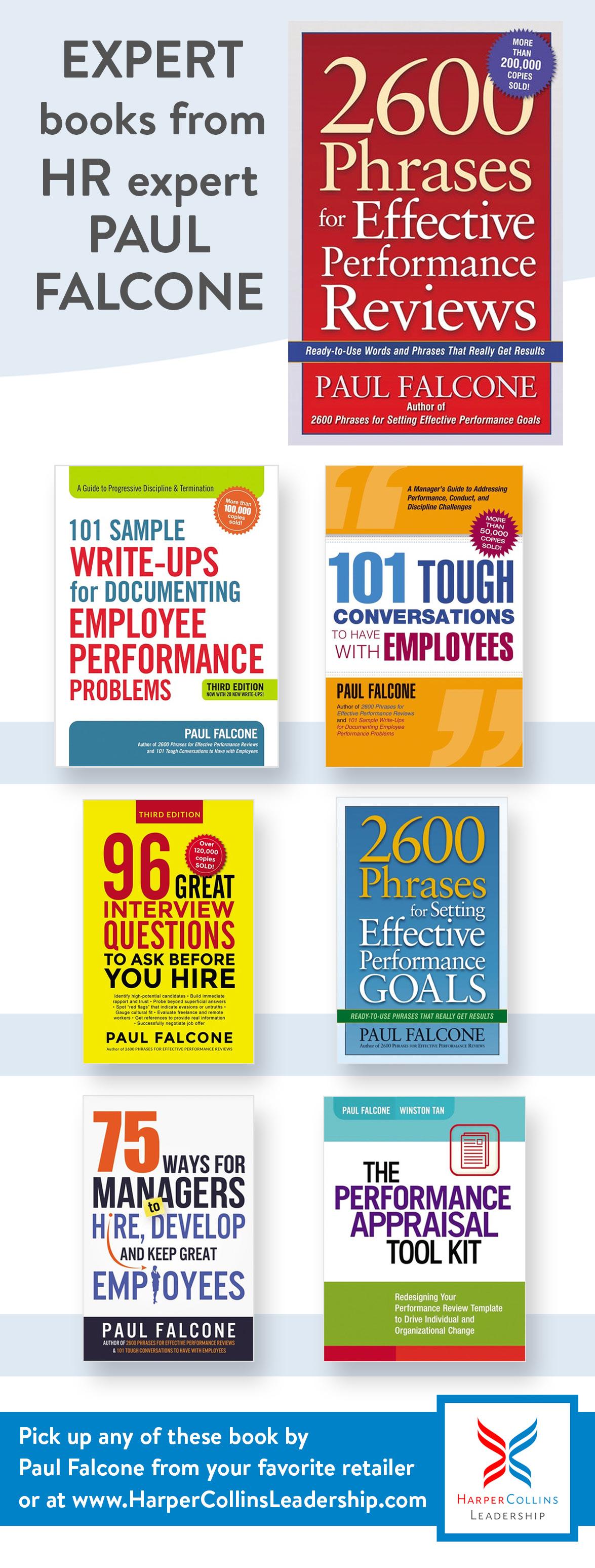
www.HarperCollinsLeadership.com
WHAT’S NEXT
Transition to Civilian Life
By Eve Nasby eve@infused.work

How to Translate Your Experiences From Combat to Corporate
Transitioning from the military will undoubtedly be one of your most challenging tasks. You may feel a myriad of emotions including confusion, humility, frustration, and satisfaction, all in the same day. This is normal. Mike Ragsdale a Navy Veteran, can relate. He says, “I’ve been there too, and will probably be there again at some point. You’re not the first to feel these things, and you definitely won’t be the last. While this doesn’t make it any easier, hopefully it provides comfort.”

The transition process can be confusing and bureaucratic, and it may not even seem fair. However, if you want to transition successfully, you need to understand the private sector and help them understand you. Nix the mindset of, “I don’t owe an explanation to someone who’s never served” or, “I don’t need to prove myself to anyone.” While it’s great to be proud, this mindset will not get you anywhere.
To make your journey smoother, Ragsdale offers three pieces of advice.
1. The private sector has no idea what you’ve done or what you’ve seen.
When you sit across from a recruiter or hiring manager from the private sector, it’s important to recognize that they probably won’t fully understand what you’ve been through. Maybe they read books or watched movies about the military, but they haven’t experienced what you have. They haven’t smelled cordite after a machine gun just cut loose on a target or flown into Ramadi on New Year’s Eve with tracer rounds flying up in the distance. The fine, talcum powder-like dirt that’s everywhere and the feeling of never being clean are things they haven’t had to deal with.

You’ve been through crazy experiences that they can’t completely comprehend, and that’s okay. Just don’t downplay what you’ve been through just because it’s hard to explain. It’s important to own your experiences and recognize that they’re a big deal, even if others don’t fully understand. This leads to his next point.
2. Ask for help.
In the military, you’re taught to gut it out. You’ll figure it out on your own, right? If you ask for help, you’re weak. Flush this from your mentality. Ragsdale urges, “Ask for help. You don’t get bonus points for extra suffering. By doing this, you’re only hurting yourself. There are people out there who would absolutely love to help you figure this out. Trust me.”
Also, networking is not a scary word. There’s no need to suffer in silence when there are people who would be happy to lend a hand. It’s always beneficial to bounce ideas off of others and get their perspective, even if it feels like it might not lead anywhere.
Even when you don’t feel like having yet another conversation with someone, that may or may not go anywhere, DO IT! Because you never know when that will lead to your next “A-HA!” moment or your next opportunity. So, keep reaching out. And if someone doesn’t respond to your meeting request, it could be a red flag indicating what they’re like to work with, or suggest a negative culture. Don’t be afraid to keep asking for help and get as many perspectives as possible.
3. Get creative and translate your experience into the role you want at the company you want.
Unfortunately, companies don’t need someone who can kick doors down, interrogate a terrorist suspect, put a GBU-12 through the window of a house from 30,000 feet, or drive a Navy warship. While these are all incredible things, the companies you’re speaking with likely don’t need these skills. What they do need are the soft and hard skills that you possess that went into these feats, such as attention to detail, project/program management, operations, strategy development and implementation, influencing without authority, and leadership.
So, think about what you’ve done and how that translates into the role you are applying for at the company.
Here are some examples:
1. Let’s say you were a Marine Corps infantry NCO, and you were solely responsible for the care and the care and feeding of all your Marines. You had to man, train, equip, motivate, and mentor. This means you were like a COO running a small business unit! That’s how you translate your experience. You had to make sure everyone had everything they needed to successfully accomplish goals and objectives.
2. What if you were in Intelligence? You were surveying the battlefield to ascertain where the enemy was, what they looked like, and based on your findings, worked to determine attack strategy. This is sales and marketing! You’ve now translated your experience into relatable and desirable skills! Companies use these same concepts to “attack” their competition and increase their market share.
3. Were you in IT? Well, this one is pretty obvious. You’re valuable!
In closing, YOU GOT THIS! Trust your instincts, ask for help, and think! You’ve proven you’re successful in austere environments where the stakes don’t get much higher. If you’ve done it there, you can certainly do it when you’re talking to a hiring manager on a Zoom call in your bedroom with no one shooting at you.

Need help with your transition? Have questions? Link up with Eve on Linked In today. www.linkedin.com/in/eve-nasby-given-hiring-expert

Finding a job in the civilian workplace may seem easy at first. After all, you have learned skills, practiced leadership and demonstrated initiative that will make you successful wherever you go.
The reality, though, is that it can be difficult. In fact, it can be downright depressing demotivating and you may feel totally disillusioned. We can help.
In our Veterans In Transition archives you will find helpful and informative articles about what’s next in transition, veterans in business, career, advice, tips, workshops, transition to education, entrepreneurship, veteran franchises, legal tips & resources for veteran businesses and much more...
For assistance in your journey please visit: SDVMagazine-Veterans-In-Transition sandiegoveteransmagazine.com/category/veterans-in-transition
VETERANS IN
Dress for Success: Empowering Warriors for the Next Chapter
By: Susan Duffy Warrior Foundation Freedom Station
www.warriorfoundation.org
Transitioning from military service to civilian life comes with many challenges—one of the most intimidating is preparing for job interviews and entering a workplace environment that feels worlds apart from the uniformed life of service. To help ease this shift, the "Dress for Success" program was created to ensure Warriors not only have the skills and confidence for the next step, but also the professional attire that signals readiness and respect.
The Dress for Success program equips Warriors with more than clothing—it provides dignity, confidence, and the tools to present themselves as capable and competitive job candidates. Each Warrior receives personalized career coaching, a businesslike photo, and professional outfits tailored to their goals. The result is more than a polished appearance; it’s the assurance that they belong in any room they walk into.
For many, the change is transformative. One Warrior shared, “This is seriously unbelievable! I just can’t believe you guys are doing this. You have no idea how much this helps!”
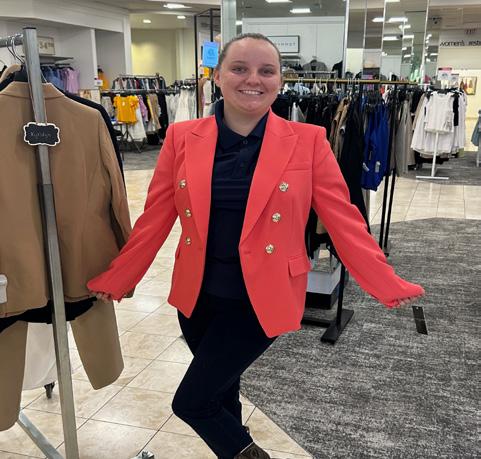
Beyond the wardrobe, the program offers workshops on workplace culture, communication, and networking— areas that often feel unfamiliar to those who’ve spent their careers in service to the nation. Mentors, many of whom are veterans themselves, guide Warriors in translating their military experience into language that resonates with civilian employers.
Another Warrior reflected, “I've been in combat boots for twenty years and had no idea how to shop. Just having someone help me pick out outfits was amazing and very helpful!”
The impact is clear. Warriors who have gone through Dress for Success consistently report feeling more prepared and empowered to pursue meaningful employment. By focusing on both the external presentation and the internal mindset, the program bridges the gap between service and civilian success.
Ultimately, Dress for Success is about more than fabric and fashion. It’s about giving Warriors the confidence to step boldly into their next mission: building a purposeful life after service.
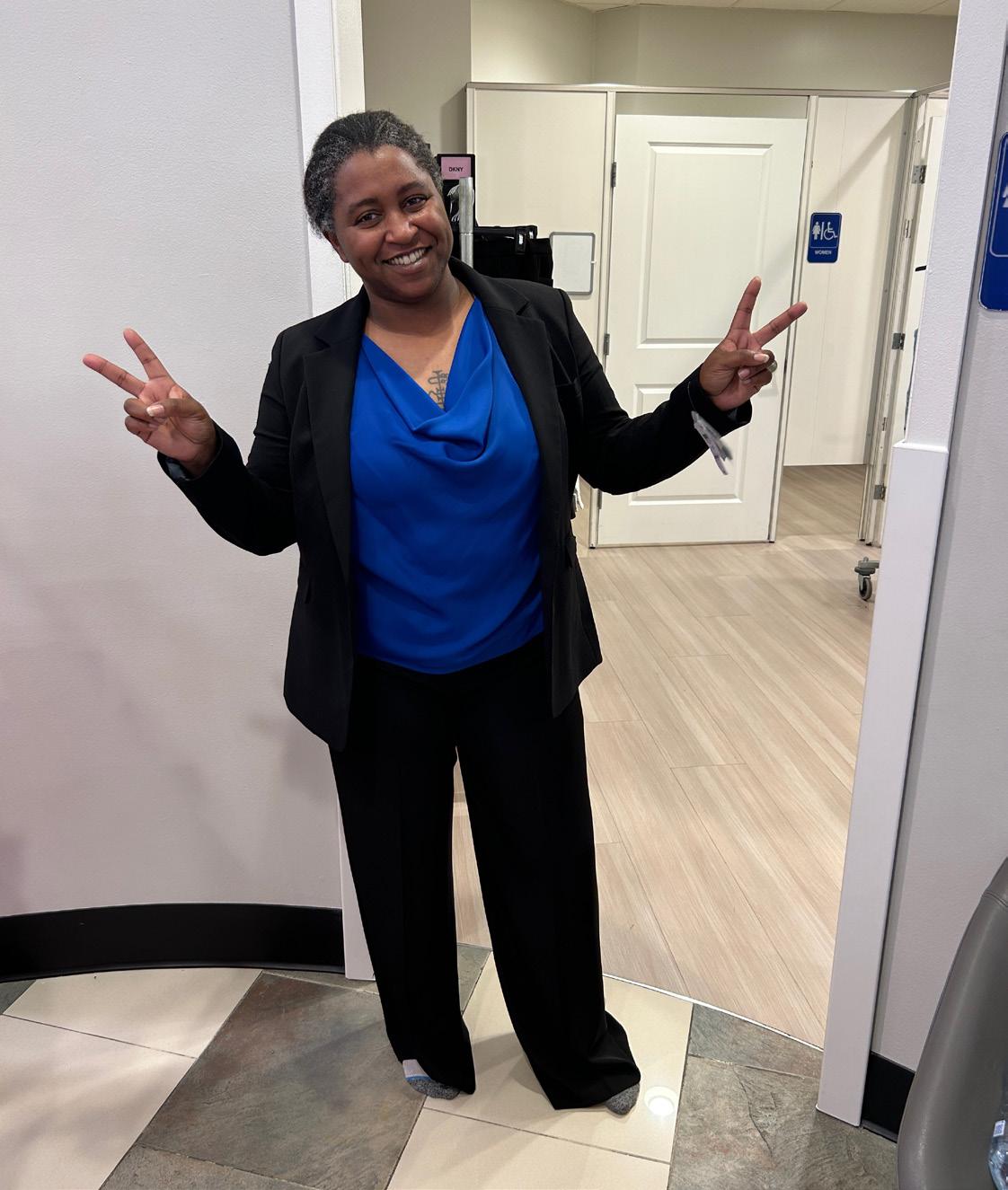
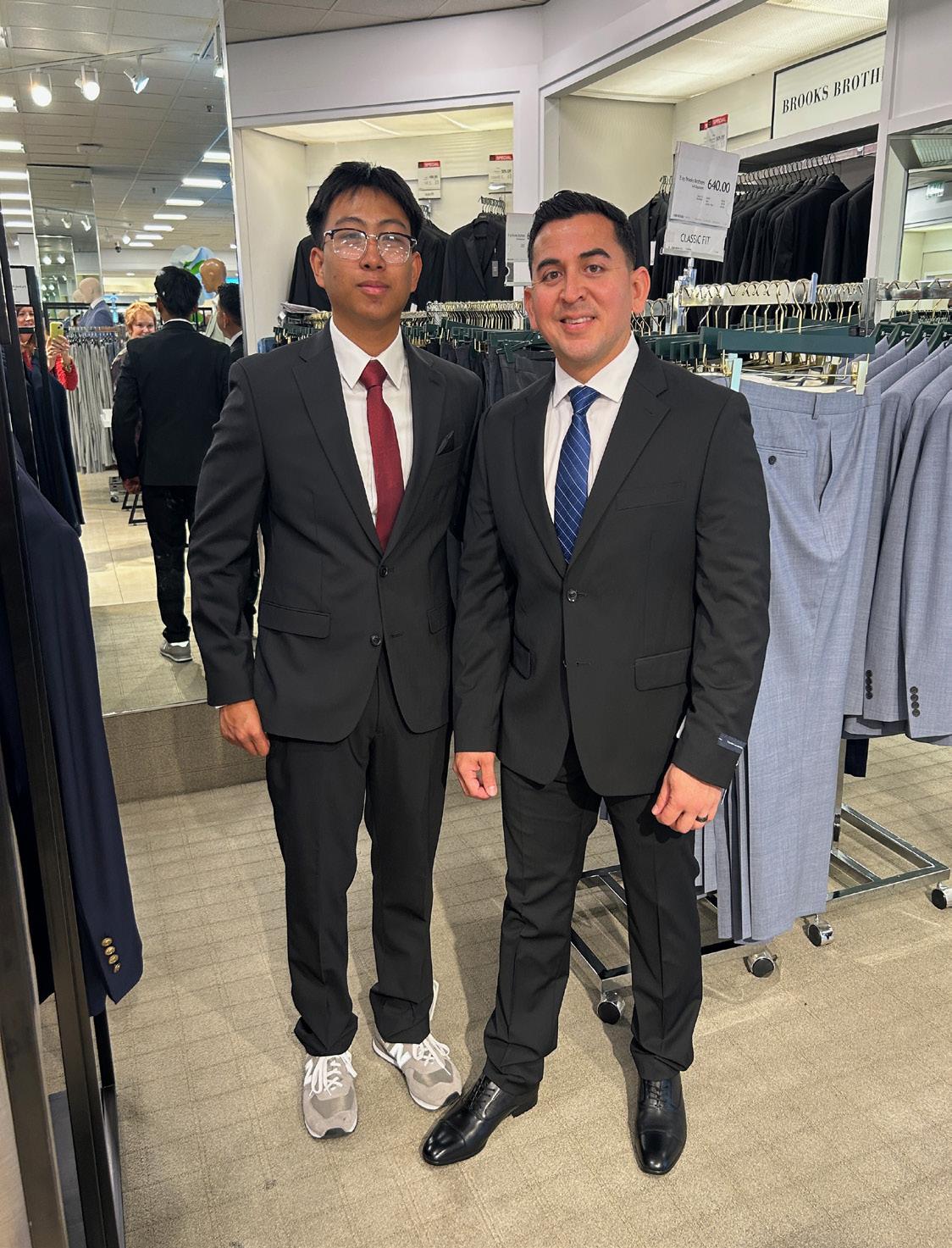

















































RUNWAY TO A NEW CAREER

Job seekers from the military community face unique challenges. DAV job fairs help them get up to speed.
By Liz Stetler

After five deployments and over two decades in uniform, Eddie High was ready to retire from the Army. But the prospect of switching careers after so long in the same field came with doubts.
“After 22 years of combat, deployments and living in various locations, I am looking forward to spending more time with my family,” High said.
In March, he joined more than 330 other service members, veterans and military spouses at a DAV job fair Fort Campbell, Kentucky. He spent the day networking with over 50 employers who were searching for high-quality talent to add to their teams.

For many transitioning service members, the job fair represents more than a chance to hand out résumés— it’s a critical step in navigating an uncertain and often intimidating journey to civilian life.
High wasn’t sure what to expect from the job fair or how to approach employers.
“A lot of us in the military don’t know what to say to employers, because we never had to present ourselves this way,” he said. “Finding the right words to say and trying not to use military jargon is a very big thing.
“And trying not to cuss,” he joked.
Like many veterans, High understands that while military experiences are valuable, translating a military career into civilian terms is no easy task. That gap often results in underemployment.
“Most employers don’t know how military skills translate into roles at their company, and many veterans don’t know how to describe their strengths and experiences in a way that employers will understand,” said DAV National Employment Director Lamarr Couser.
“This misunderstanding is a leading factor for underemployment among the veteran community, because these veterans are not employed at their skill level, and they are not being compensated for what they are actually worth on the job
market. Attending DAV job fairs can alleviate that through face-to-face conversations in a military-friendly, pressure-free environment,” Couser said.
Despite his initial uncertainty, High left the job fair encouraged and motivated to continue his journey.
“Because of the military, I bring reliability and expertise to my next role,” he said. “Veterans have discipline, team cohesion and responsiveness. I was a little skeptical at first, but I’m glad I came.”
Still a year out from his retirement date, active-duty Army soldier Adam Eisenhauer attended the Fort Campbell event with a forward-looking mindset.
“I am a maintenance supervisor. I’m mostly looking to network and make connections that might help me when I get closer to my retirement date,” he said. “After so many years in the Army, I’m just looking to have a more normal work-life balance and regular schedule.”
For Eisenhauer, meaningful civilian employment would allow him more time with his family and a more stable lifestyle. “There are a lot of opportunities at this job fair. It is like a runway for me to get things started now so I can lift off when I get to that point,” he said.
For those at or near transition out of the military, DAV job fairs offer the chance to not only explore multiple career opportunities but also receive guidance on benefits from the Department of Veterans Affairs and other available programs. Couser, a service-disabled veteran who served 12 years in the Navy before transitioning to the Army National Guard and eventually retiring, recognizes the added value of benefits assistance.
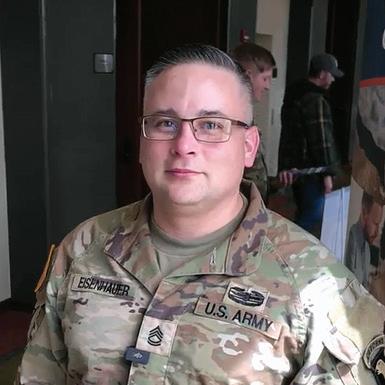
“Utilizing the resources available can make or break your military transition,” Couser said.
“These job fairs are only one of the ways DAV supports veterans and their families, but meaningful employment is an integral part of adjusting to civilian life. It’s an honor to help.” n
dav.org dav.org
High Eisenhauer
BUSINESS FOR VETERANS
By Barbara Eldridge www.mindmasters.com

The Final Quarter Countdown: Time to Re-Evaluate Your Financial Strategy

As we enter the final quarter of 2025, only 92 days remain to make the most of this year. This is a critical time for all business owners to re-evaluate their strategies—especially in the financial realm. Whether you’re running a small veteran-owned business or a larger operation, now is the perfect opportunity to assess your financial standing and plan for a prosperous year ahead.
1. Are You Prepared for Year-End Taxes?
With the year wrapping up fast, now is the time to get a handle on your tax obligations. Have you kept up throughout the year, or are you playing catch-up? Either way, don’t wait until the last minute. Scrambling can lead to costly mistakes and unnecessary stress.
Start by reviewing your records, organizing your documents, and connecting with your accountant to avoid surprises and ensure you’re fully prepared for the year-end crunch.
2. Evaluate Financial Needs for 2026
Running a business is expensive, and controlling costs should be a top priority. That’s why the last quarter is an ideal time to reassess your financial needs for next year. Are your current expenses aligned with your business goals? Are there areas where you can cut back or invest more strategically? With guidance from your accountant, take a clear-eyed look at what’s working, what’s not, and what adjustments you need to make to position yourself for a strong 2026.

3. Prioritize Strong Financial Management
Successful businesses are built on sound financial habits. You don’t need to be a finance expert, but you do need to be consistent and disciplined.
Poor accounting is one of the top reasons small businesses fail. Commit to tracking revenue, expenses, cash flow, and budgets every month. Build simple, sustainable routines that put you in control of your financial picture. This is not optional—it’s essential.
4. Mindset Matters: Stay Focused and Positive
Your financial mindset is just as important as your spreadsheets. The way you think about money can shape the decisions you make—and ultimately, your business outcomes.
A scattered or negative mindset leads to poor choices and missed opportunities. But a focused, proactive mindset empowers you to find solutions and stay on track. Take time to reflect on how your thinking supports or undermines your goals, and adjust as needed.
Final Thoughts
As a veteran business owner, you already possess the discipline, strategic thinking, and resilience that lead to success. Now is the time to apply those same qualities to your financial strategy.
Use these last few months of the year to reset, refine, and realign. Whether it’s preparing for tax season, tightening your budget, or strengthening your mindset, the actions you take now will set the stage for a strong finish to 2025—and an even stronger start to 2026
Remember: Financial success isn’t accidental. It’s intentional. Make the right moves today, and you’ll be well-positioned for a profitable and prosperous year ahead.
Barbara Eldridge President/ Founder of Mind Masters created groups for business owners to tap the synergy of energy, commitment and excitement for each other. The beauty of Mind Masters is that participants raise the bar by helping each other implement goals, brainstorm ideas, create solutions, and offer mutual support. Checkout how a Group can enhance your business while also creating personal and professional and financial growth. www.mindmasters.com

www.dreammakerfranchise.com/veterans-franchising-opportunity
Veterans Chamber of Commerce
By Joseph Molina veteransccsd@gmail.com


Business Opportunities with Low Investment
The Benefits of Starting Residential Senior Housing Businesses
As America’s aging population continues to grow, the demand for quality senior housing and care programs has never been higher. Entrepreneurs who establish senior-focused housing facilities not only create meaningful businesses but also address one of society’s most urgent needs: safe, supportive environments for older adults. Three of the most common options—Residential Senior Facilities, Assisted Living Programs, and Independent Living Facilities—each offer unique opportunities and benefits.
1. Residential Senior Facility
A Residential Senior Facility typically operates out of a home-like setting, often in a converted singlefamily residence. This option provides a warm, familyoriented environment where seniors can receive daily assistance with meals, personal care, and social activities.
For example: a two-bedroom home that accommodates four seniors (two per room) can generate between $3,000–$5,000 per month depending on the level of care, total monthly income could range from $12,000–$20,000.
Licensing requirements vary by state but often include Residential Care Facility for the Elderly (RCFE) licensing or an equivalent, along with health and safety inspections.
2. Assisted Living Program
Assisted Living Programs are designed for seniors who need more structured support but do not require the full services of a nursing home. They provide help with medication management, bathing, mobility, and meals, while also creating opportunities for socialization and enrichment.
In a two-bedroom home, you could accommodate multiple residents through shared or private rooms.
At rates ranging from $3,000–$6,000 per month per resident, a program serving four to six residents can bring in $14,000–$36,000 monthly. Staffing and medical oversight costs are higher than residential senior housing, but the value proposition is strong given the growing need.
Licensing requirements typically involves an Assisted Living Facility license, compliance with local fire and building codes, and staff training certifications in first aid and caregiving. The social impact is great: these programs support local healthcare providers, and create jobs for caregivers, nurses, and administrative staff.
3. Independent Living Facility
Independent Living Facilities are geared toward active seniors who do not require daily personal care but still want a safe, community-based environment. These programs often provide private or semi-private housing, meals, transportation, and social activities, giving seniors freedom with added security.
In a two-bedroom property converted into independent living, rents can range from $2,000–$3,000 per resident. With four residents, potential income is $8,000–$12,000 monthly, with relatively lower staffing costs compared to assisted living.
Licensing requirements are typically less intensive, often involving only standard housing permits and compliance with local zoning. This makes independent living an attractive entry point for entrepreneurs.
Community and Family Impact
Each of these models helps families by ensuring their loved ones are cared for in safe, supportive settings. Locally, they generate jobs, reduce healthcare strain, and create trusted spaces where seniors can thrive.
For business owners, they combine meaningful work with sustainable income, making senior housing one of the most impactful entrepreneurial ventures today. Contact us if you if you would like to explore one or more of these Opportunities.
Your Franchise Journey Starts Here:
Free Expert Guidance
Franchise Wealth Consultants is dedicated to helping you achieve your entrepreneurial dreams and secure your financial future through business ownership.
Our Ideal Franchise Candidates Include:
• Aspiring entrepreneurs eager to control their future.
• Professionals aiming to transition from the corporate world.
• Investors seeking semi-absentee or passive income opportunities.
• Experienced operators looking to expand their portfolios.
• Veterans, public service professionals nearing retirement, and former corporate management professionals represent the largest segment of our franchisee base.
We Help You Find The Opportunity For Success!
• Franchising offers a proven business model and brand recognition
• FWC helps you successfully navigate the world of franchising, which can be overwhelming if you are not familiar with the process.
• We have access to the largest inventory of top-performing franchises through the IFPG network, the largest franchise network available.
Our Consultations
& Services Are FREE TO YOU!
Why is it free? Our consultation comes at no cost to you because we’re compensated by the franchise companies—not by our clients. This means you get unbiased guidance and support, with your best interests as our top priority. So, there is not only no fee, but no obligation on your part.
We Can Find The Right Fit For Success - For You!
• Always personalized recommendations and expert guidance
• We’ll help you find the perfect franchise that aligns with your lifestyle, personality, goals, and budget - at no cost to you
• Clear, honest answers to your questions
• Need to explore financing options for your franchise? We can connect you with trusted partners.
We’re more than just consultants. We are your strategic partner.

Franchise Wealth Consultants, Ltd.



legal Eagle
Straight-forward legal tips for Military and Veteran
Business
Owners
By Kelly Bagla, Esq. www.BaglaLaw.com


E-COMMERCE LAWS AFFECTING ONLINE BUSINESSES
If you have an online business, you need to comply with the general corporate laws and local and international laws applicable to your business. Additionally, you need to comply with digital specific provisions around web accessibility, data privacy, and electronic payment processing that may be applicable to your online store.
Taxes and Sales Taxes
Forty-five states and Washington D.C. impose statewide sales tax. However, different cities, counties, and special taxing districts may also add local sales tax rates on top of statewide taxation. Failure to properly calculate and collect the right sales tax amount can put a dent in your profit margin.
Import Duties and Taxes
If you import products from foreign-based suppliers valued in excess of a certain threshold, your imports may be subject to customer duties. Also, other tariffs and taxes may apply if you regularly ship products in larger quantities.
Payment Gateways
Payment gateways are the lifeline for securely processing customer payments. The key word here is “security” as a payment data breach can lead to a major regulation fine. Not to mention it could result in indirect losses associated with damage to your brand image. Make sure your payment gateway is federally compliant.

PCI Compliance
Payment Card Industry (PCI) and Data Security Standard (DSS) sets unified standards for securely processing card transactions and brings all industry practices to the same level of compliance. Being PCI compliant does not just mean providing a secure, encrypted checkout experience, you will also need to avoid storing any purchasing information on paper or via recording.
Age Restrictions
Anytime you launch a website, it is absolutely required that it comply with the Children’s Online Privacy Protection Act (COPPA). One restriction that will apply to your site is the inability to collect any personal information from a child under the age of 13.
Customer Privacy
E-commerce websites can collect valuable insight to create a data-driven experience for shoppers. Data privacy laws around the world prohibit merchants from using customers’ personal identifiable information (PII) for analytics purposes. This includes full names, addresses, social security numbers and debit and credit card details.
While PII regulations focus broadly on how organizations handle an individual's personal data, Cookie Laws address the specific technology of storing information on a user's device. The U.S. does not have overarching federal law regulating cookies. Many states, however, have data privacy laws that cover cookies when they are used to collect personal information. California, for instance, requires transparency about data collection and gives customers the right to opt out of the sale of their personal information, which can include data collected via cookies.
Websites

Website Accessibility
Digital accessibility improves usability, expands your audience reach, and shows that your business values inclusivity. Inaccessible websites can lead to discrimination lawsuits.
According to Title III of the ADA, all “places of public accommodation” must make reasonable efforts to accommodate people with disabilities. Courts and the DOJ interpret the ADA to include websites as "places of public accommodation" that affect commerce. While the ADA does not provide specific technical standards for websites, the Web Content Accessibility Guidelines (WCAG) 2.1 Level AA is the widely accepted framework for conformance. (These guidelines are not mandated by the ADA but are recommended as best practices.)
Pre-built website tools can be utilized to improve website accessibility to conform to most of the ADA and WCAG guidelines, thus showing reasonable efforts to accommodate disabled people. But for absolute, 100% conformance to WCAG guidelines, an accessibility expert can perform a thorough accessibility audit and help you strictly conform to WCAG standards.
If you need help determining if your corporation is compliant with these and other online regulations, we can help. Please visit my website at www.BaglaLaw.com

Disclaimer: This


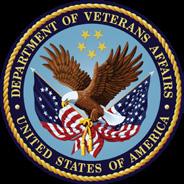






Boot camp prepared you for the military. We prepare you for college.
Just like boot camp molded you into the service member you would become, our free on-site and virtual programs mold you into the college student you strive to be.


Scan the code to learn how our programs help enlisted veterans succeed in college

RISKY BUSINESS
Insurance Info & Risk Management Tips
By Hadley Wood www.hlinwood-insurance.com

Should I Consider Umbrella Coverage?

You may have heard the term Umbrella Insurance relating to your personal assets and/or your business operations but what exactly is it, and is it something you should consider adding to your insurance package?
Umbrella coverage is an extra and added line of coverage that can go over your personal assets such as your homeowner's insurance, auto coverage, rental properties or over your business insurance coverage such as General Liability, Workers Compensation or Commercial auto coverage. It acts as a second layer of coverage to give you additional coverage should your underlying coverage be insufficient in a claim situation. Umbrella coverage can also fill in some of the coverage ‘gaps’ that the underlying insurance may exclude. Example: if your underlying insurance has an exclusion on dog bites, the Umbrella policy may offer coverage for this; or your business insurance policy excludes Breech of Contract liability, the Umbrella policy may be able to cover this.
Some reasons to consider Umbrella coverage might include:
1) You have multiple vehicles and want to carry higher imits of liability than your carrier will offer.

2) You have a number of personal assets to protect but your homeowners will only offer up to 1M in liability coverage
3) Your business has a contract with a vendor/client that requires you carry 5M in Liability coverage but your business insurance carrier will only go up to 2M in coverage.
You may ask why your underlying insurance company just won’t increase the limits on the liability for you instead of having to obtain the Umbrella policy? Insurance companies like to share the risk with other companies so they don’t exceed their risk capacity. Sharing the risk means they will not be on the hook for the full 5M (if that is what you want or require) should a large claim happen. They can pay out their 2M responsibility and then have the Umbrella carrier pay out the remaining portion.
There is also a coverage called Excess Coverage. Excess coverage, like an Umbrella, goes over your underlying coverage limit - but it differs in that it only lays over one type of coverage (such as your business General Liability) and not a ‘umbrella’ over multiple lines of coverage. Excess coverage generally follows the underlying coverage policy and will not add any additional coverage to fill in any coverage ‘gaps’.
Both Umbrella coverage and Excess coverage are for Liability coverage only. Liability coverage is for damages you or your actions cause other people. They do not cover property damage claims, personal loss, personal medical expenses, etc.
The cost of Umbrella coverage can vary depending on how much coverage you want, the premium of your underlying policy and the nature of the risk you are covering. Discuss the options with your Broker/Agent if you feel this may be something you would like to add to your risk management portfolio.
If you want to learn more about Umbrella insurance or have questions about business insurance, please reach out to me at hadley@hlinwood-insurance.com






You are invited!
October Open House
Sunday, Oct. 12 (1 p.m. to 2:30 p.m.)
7031 Carroll Road in San Diego
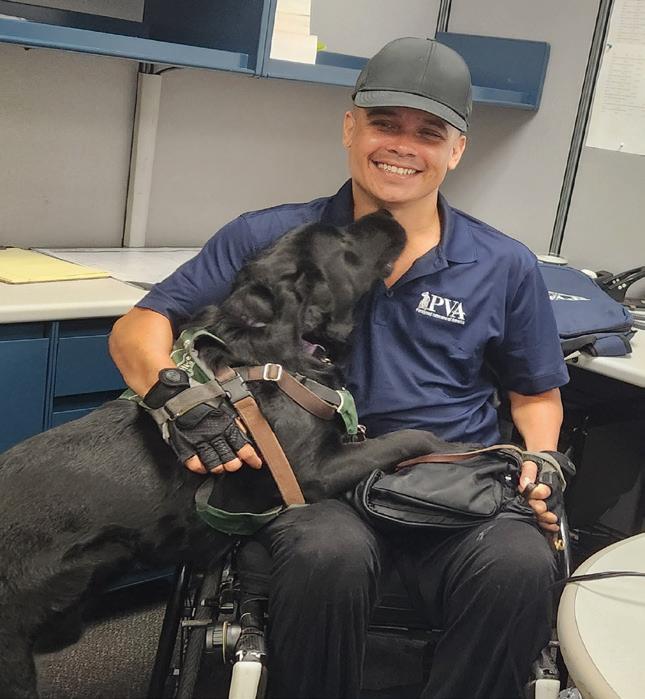

Dogs Helping People!
Learn about our work training and placing service, facility and therapy dogs, what they do, how they are trained, and who we serve.
The Open House is open to the public, FREE to attend, and family-friendly. Attendees must register by emailing their name to: Oct2025@pawsteams.org

Please join us!
November Open House
Sunday, Nov. 2 (1 p.m. to 2:30 p.m.)
7031 Carroll Road in San Diego
Pawsitive Team Serves active duty and veteran communities of San Diego
We are with veterans and active duty at Camp Pendleton's Intrepid Center and at the VA Hospital. Also, with our Canine Inspired Community Reintegration therapy dog program, and we train and place service dogs with veterans with PTSD. Come meet our graduates, volunteers, and guests of honorour service, facility, and therapy dogs!
The Open House is open to the public, FREE to attend, and family-friendly. Attendees must register by emailing their name to: Nov2025@pawsteams.org












THE SAN DIEGO VETERANS COALITION IS A COALITION OF OVER 150 UNIQUE NON-PROFITS, BUSINESSES, GOVERNMENT AGENCIES AND EDUCATIONAL ENTITIES ALL UNITED BY THE GOAL OF SUPPORTING MEMBERS OF OUR COMMUNITY WHO SERVED OUR COUNTRY IN THE ARMED FORCES, THEIR FAMILIES, AND THEIR CARETAKERS.
SAN DIEGO VETERANS COALITION
The San Diego Veterans Coalition was organized in 2009 and incorporated as a non-profit on May 24, 2011. Using the Collective Impact Model, SDVC is a premier San Diego County-wide monthly convener of over 150 unique member and participating organizations, businesses, and agencies, as well as convening many of that body in our four action groups, and other activities and events. The Collective Impact Model is based on leveraging relationships with other veteran and family serving organizations so that we may provide veterans and their families with a complete array of services and other opportunities.
Many of the organizations that belong to SDVC specialize in one field (education, housing, employment, healthcare). Knowing what services each other provides, we can offer comprehensive support to our local Veteran community. We are proud to work alongside a wide variety of non-profit and for-profit organizations, as well as governmental agencies and individuals. The SDVC is a catalyst that inspires collaboration and cooperation among service partners to deliver premier support for Veterans in the San Diego region and beyond.


SDVC is proud to have partnered with ONWARD OPS, which has partnered with the Veterans Administration, the Department of Defense, and local communities to support service members through the process from military to civilian life by matching them with one-on-one sponsors in their specific community.
ONWARD OPS Sponsors all complete a VA-Certified Sponsor Training Course and the Community Integration Coordinators are all validated as best-in-class, trusted, and capable partners in their local region. Our national network, working with the department of defense, the department of veterans affairs, and the department of labor, brings a team together in one common mission: to securely provide the information and relationships needed to help every transitioning service member successfully make the journey out of the military and into civilian life.








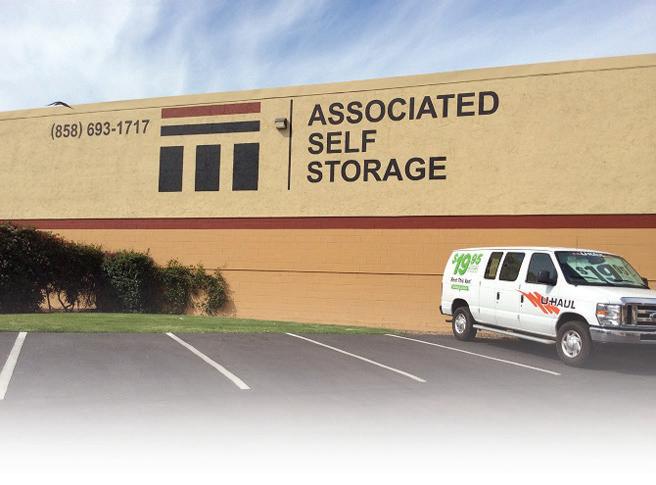












SDPD Ride Along: A Story of Two Marines
By Amber Robinbson San Diego Veterans Magazine
When I asked to go on a ride along with the San Diego Police Department, making a special request for any veterans-turned-cops, I expected a really serious, possibly dangerous, afternoon of shadowing our city’s toughest crime fighters.
What I got was an afternoon of heartfelt service to our San Diego community, honorable humility and a lot of respect.
When I asked whether former Marine Sergeant Major, Mark Wright, and his partner, former Marine Staff Sergeant, Sean Bunch, had rank or titles he said their titles were just San Diego police officers. They are relatively new partners, but act like they’ve known each other for years, which is usually the case when you get Marines together.
Wright is a newer addition to the force, coming on board two years ago, with Bunch only having two years left.
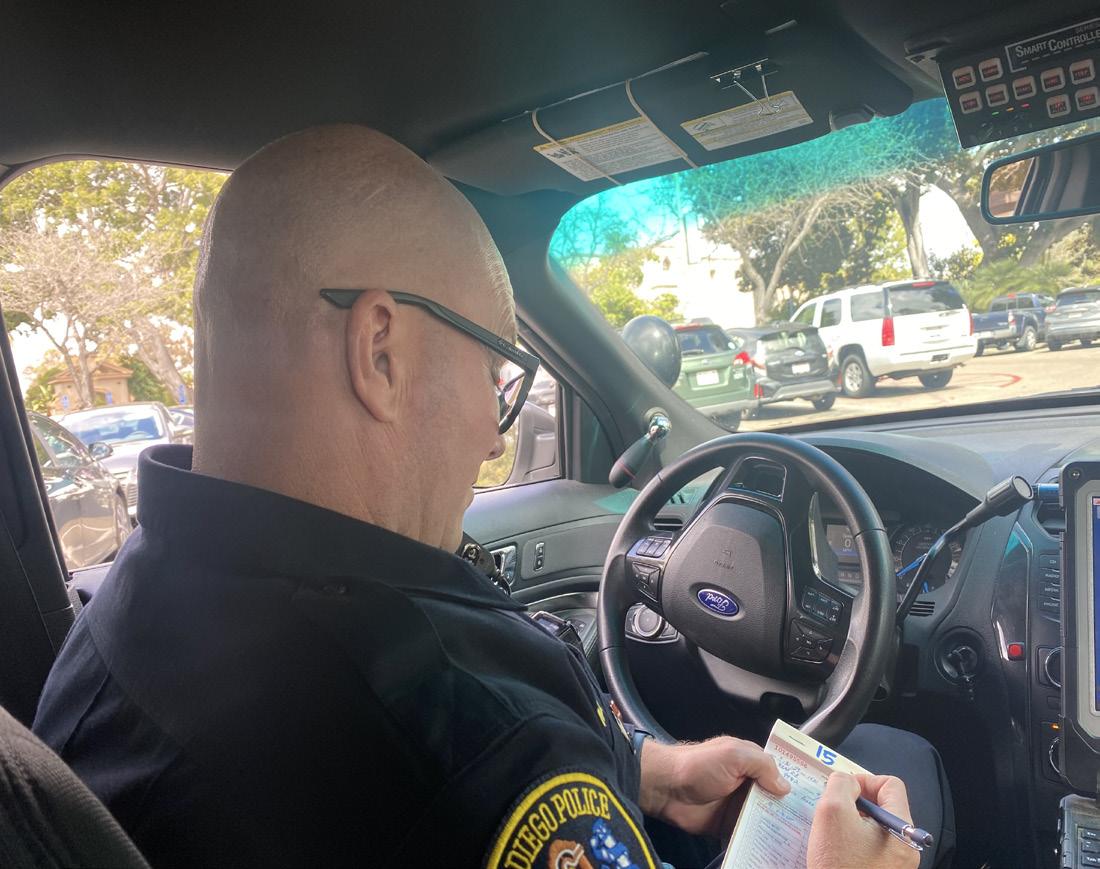
Currently, these brothers-in-arms spend their days patrolling the entirety of Balboa Park.
Although neither men are taking fire or kicking in the enemy’s door on this beat, like during their time in Iraq or Afghanistan, they still work hard to serve their local community. Service which can range from tracking down criminals to answering questions from lost pedestrians, to giving out stickers to kids and never backing down from a chance to turn on those flashing red and blues just to make one of them smile.
Most of our particular day was cruising around beautiful Balboa Park running car tags to see if they were current, from cars not displaying proper plates and placards to those double parked. Bunch says they often catch parole violators or even stolen cars doing just this. I was struck as I watched both officers go out of their way to look in and around vehicles to find plates or disability placards not displayed correctly so as to avoid issuing superfluous tickets.
“We try to give everyone the benefit of the doubt,” said Wright. “We’re not out to get anybody.”
Although, both officers confirm that enforcing even the most basic of park rules can yield large payoffs. During a recent patrol Bunch spotted an individual smoking in the park, which is illegal. As he circled back round, the individual turned and rapidly tried to walk away, which activated immediate suspicion. He was detained and came back with a warrant for numerous kidnapping and child molestation charges.

Both men say a lot of what they do is talk with museum owners and those living in the neighborhoods surrounding the park about their concerns. A shared concern by all is the park’s homeless population.
Bunch says their posture towards the homeless is mostly that of assistance, adding there are many resources available for those who would take them.
Officer Sean Bunch
Officer Mark Wright
The city spends a lot of money on resources,” said Bunch. “The biggest problem we run into is whether or not the [homeless] people want them, and a lot of them don’t.”
Thus, the men tend to run into the same issues with the same people pretty often. Although frustrating, they have learned that respect goes a long way when challenged with these repeat offenders. Bunch recalls spotting one such offender in the park, who was in violation of his parole and wanted on warrant. He was unable to get to the offender immediately, but still apprehended him with a verbal request. The parolee waited patiently to be hand-cuffed and arrested, simply out of the respect he held for the law man.
“Being respectful of everyone despite their lot in life goes a long way in this job,” said Wright.
Both men say a huge part of their work is being able to connect and communicate with the myriad of people they meet daily.
Bunch says he feels he and Wright are lucky to come to the force later in life, given it means they have a wider frame of reference for those they meet and serve daily. “We deal with people who are going through all kinds of things in life,” said Bunch. “And it’s helpful to be able to say, ‘hey I know what you are going through, I’ve been there.”
As the day progressed, I realized that both gentlemen definitely had a long list of tough and unique life experiences to pull from. Both proudly served the United States Marines for years, traveling to war and all over the world, experiences that yield much wisdom as well as many a story.

Bunch, for instance, did not come to the force straight from the Marines, but from Hollywood. Surprisingly, he is a member of the Screen Actors Guild, working as a military advisor on various productions, like Lonestar 911, and appearing in some as well, such as one of the most recent Men in Black movies.
“I grew up outside of LA,” said Bunch. “So, I’ve always just kind of been around the business and found a place for myself there with all my military experience.”
Bunch hopes to return to work in Hollywood after he leaves the force, bringing with him a new level of experience and respect.
Wright, who retired from the Marines as a Sergeant Major never worked in Hollywood, but he does have plenty of stories about being a proud grandfather, father and new amputee. When I entered the Central Division Station and met him, he said he was just getting back to work after some time off after losing his leg.
Wright remained unscathed during his over-20-years in service, overseas deployments and endless combat train ups. It wasn’t until after service that he lost his leg in a motorcycle accident late one foggy night a little over a year ago. Wright says it had been an eventful second watch and he was leaving the station about 2 AM on his motorcycle when it happened.
“It was only about two minutes from work,” said Wright. “I was coming around a curve and entered into what I thought was fog, and as I’m entering, I see a headlight and side mirror in my lane.”
That headlight and mirror became an entire car that was blocking Wright’s entire side of the road.
“I was a heuy crew chief in the Marines and reverted to my training from that, grabbed my shoulders, braced for impact and went flying like a human lawn dart over my handlebars,” said Wright.
Wright landed in the ditch on the side of the road. He says he realized immediately that he had a back and leg issue. He learned that a bystander had called 911, but he requested they call back and state that the injured motorcycle rider was a policeman with the San Diego Police Department and expedite services. This one request would become pivotal in saving Wright’s life.
Continued on next page >
“What I didn’t know at that time was that I had severed two arteries in my leg, and I was bleeding out,” said Wright.
What Wright would learn later is his heel had also been torn off on the wrecked car as he sailed past it into the ditch. After much pain and many surgeries, Wright would finally lose his leg from the knee down. says he doesn’t let it get him down, though. He’s proud to continue to serve as one of our city’s finest.
Both he and Bunch take much pride in their time as Marines and as San Diego Police Officers. Each officer comes from strong military stock, with Wright’s grandfather being a World War II veteran and Prisoner of War and Bunch’s father a decorated veteran of Vietnam.
All in all, this Army vet’s afternoon with two Marines was an impressive one. Both seasoned public servants, these honorable men have discovered you must give respect to get it, that violence is often not the answer and the most important thing to keep in mind along the way, is a good, human dose of empathy.

For more information visit www.joinSDPDnow.com or email us at SDPDrecruiting@pd.sandiego.gov

Officer Sean Bunch - Amber Robinson (SDVM) - Officer Mark Wright






